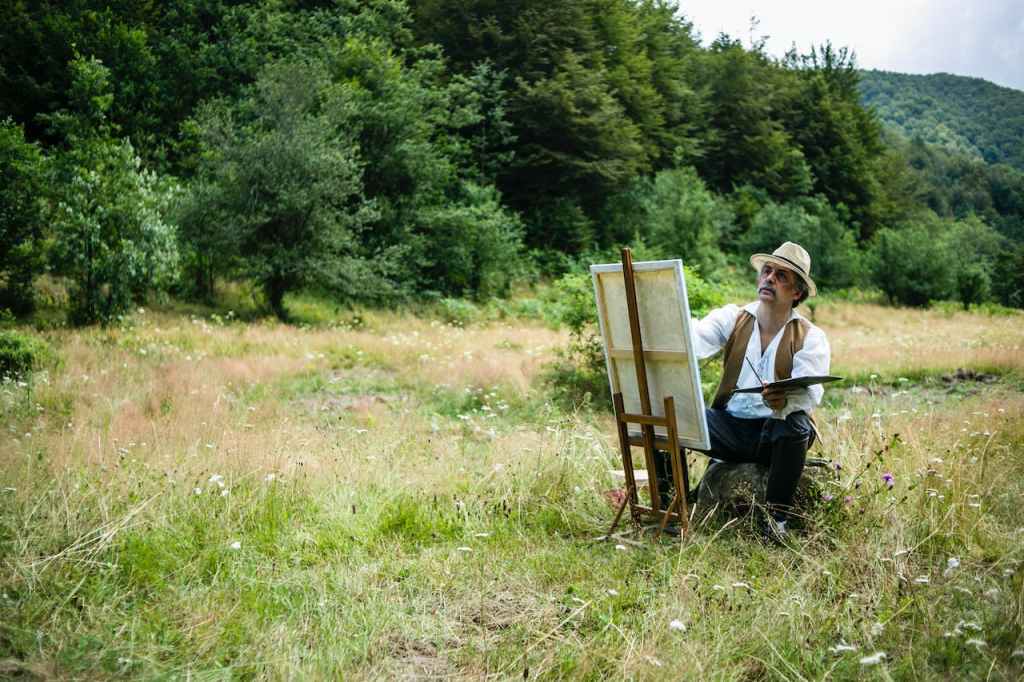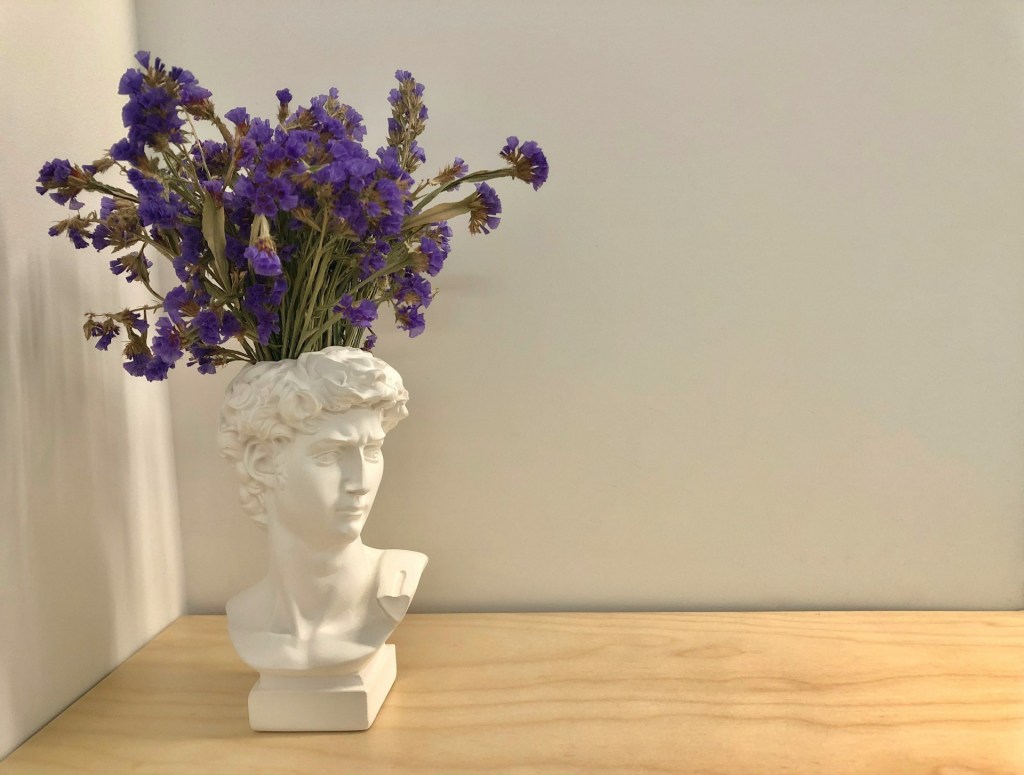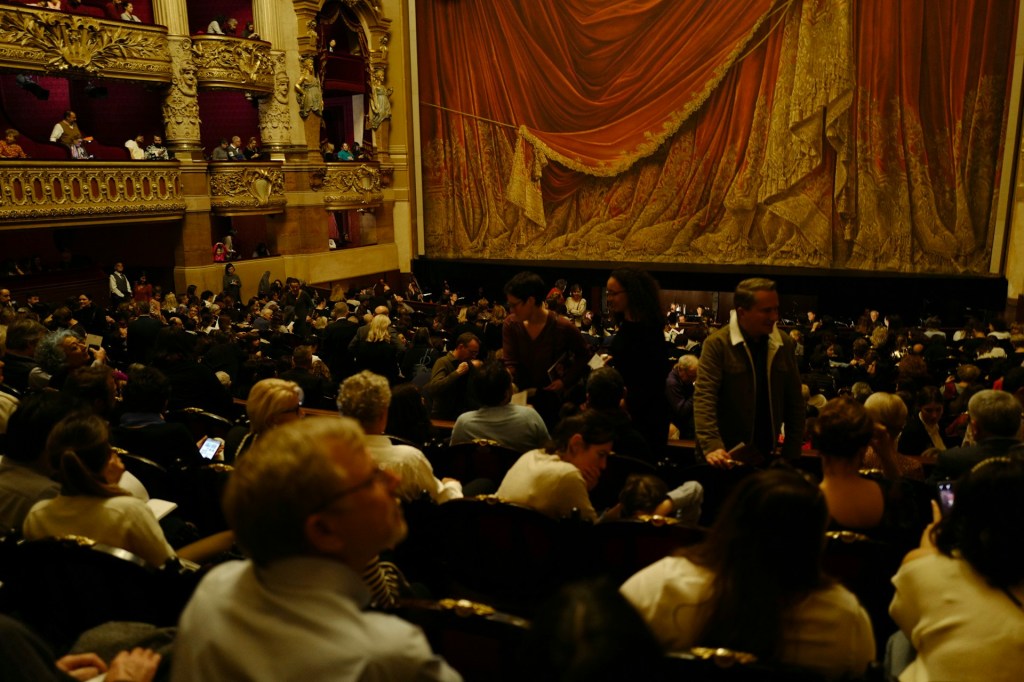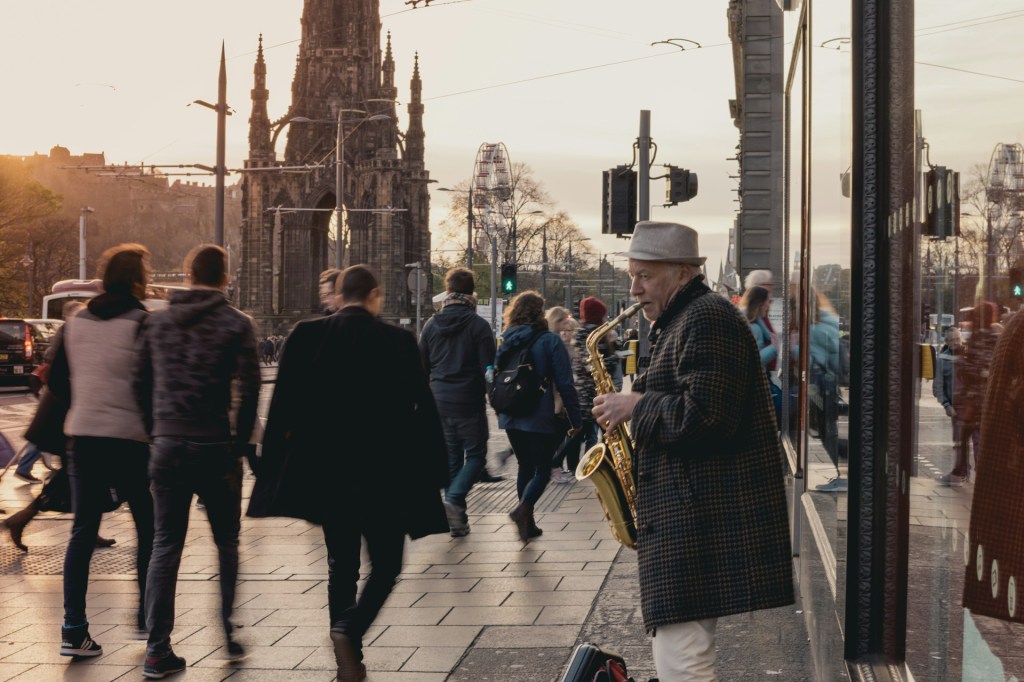Forms of art are specific categories or classifications of artistic expression, each characterized by distinct techniques, mediums, and conventions. They help organize and comprehend the diverse range of creative expressions.
7 Different Forms of Art
Regardless of new art forms constantly enriching the diversity of artistic expression, there are classic and universally recognized forms of art that make the pillars holding the very concept of art. 7 classic forms of art are:
What Are Classic Art Forms?
Classic art forms have stood the test of time and are recognized for their enduring cultural, artistic, and historical significance. Here is why those factors are important.
Historical Significance
Painting, sculpture, architecture, literature, theater, cinema, and music have been practiced for centuries, often tracing their origins back to ancient civilizations. They have played integral roles in human culture and history, contributing to the development of societies and civilizations.
Enduring Appeal
These art forms have demonstrated a timeless quality resonating with audiences across different eras and cultures. Classic art forms evoke universal themes and emotions that transcend time and place.
Cultural Influence
Painting, sculpture, architecture, literature, theater, cinema, and music impact cultural identities and values. They are vehicles for expressing cultural beliefs, ideals, and narratives, influencing societal norms and perceptions.
Artistic Mastery
Throughout history, artists and creators within classic art forms have achieved unparalleled levels of skill and innovation. Their works have set standards for craftsmanship, creativity, and artistic expression, earning them recognition as classics.
Let’s explore each of the seven different art forms and examine their examples.
Painting

Painting is a visual art form that involves applying paints onto a surface, such as canvas or paper, to create images or designs. Artists use various techniques to create images, convey emotions, and communicate ideas. Painting has a rich history and encompasses many styles, making it a versatile and enduring form of artistic expression.
“Painting is just another way of keeping a diary.”
Pablo Picasso
Key Characteristics of Painting as an Art Form
- Two-Dimensional Surface. Painting is typically created on a two-dimensional surface, such as canvas, paper, wood, or fabric. Unlike sculpture or installation art, which occupies three-dimensional space, painting is flat.
- Pigments and Color. Artists use pigments, which are colored powders or substances, mixed with a binding medium (such as oil, water, or acrylic) to create colors. The manipulation of color is a fundamental aspect of painting.
- Brushwork and Technique. The application of paint involves various techniques and brushstrokes. Artists use different brush sizes, strokes, and methods to achieve desired textures, patterns, and visual effects.
- Composition. Painting involves the arrangement of elements within space. Composition refers to the organization of forms, colors, and other visual elements to create a harmonious and balanced image.
- Representation or Abstraction. Paintings can be representational, depicting recognizable subjects like landscapes or figures, or abstract, focusing on form, color, and expression without direct representation of recognizable objects.
- Layering and Texture. Artists can layer paint to create depth and texture. Texture may be manipulated by applying paint thickly (impasto) or thinning it to create smooth surfaces.
Sculpture

Sculpture is a three-dimensional visual art form where artists create physical forms and shapes by manipulating and modeling various materials. Sculptures can be freestanding or integrated into architectural structures. Unlike paintings or drawings, occupies three-dimensional space and encourages viewers to explore it from multiple viewpoints.
“Every block of stone has a statue inside it, and it is the task of the sculptor to discover it.”
Michelangelo
Key Characteristics of Sculpture as an Art Form
- Three-Dimensionality. Sculptures occupy physical space and have height, width, and depth. Viewers can walk around them to experience different perspectives.
- Materials. Sculptors use various materials to create their works, including traditional materials like bronze, marble, and wood, as well as more contemporary materials like plastic, metal, and found objects.
- Techniques. Artists employ different techniques such as carving, modeling, casting, welding, and assembling to shape and form their sculptures.
- Scale. Sculptures exhibit a diverse range of sizes, from small and intricate pieces to large-scale public installations and monumental artworks.
- Installation Art. Some sculptures are designed for specific spaces and are considered installation art. These artworks often engage with the surrounding environment.
Architecture

Architecture, as an art form, is the creative and expressive practice of designing and constructing buildings and structures. It goes beyond the functional aspects of providing shelter and encompasses aesthetic, cultural, and symbolic dimensions.
“A building is alive, like a man, and its spirit is the spirit of its maker.”
Frank Lloyd Wright
Key Characteristics of Architecture as an Art Form
- Aesthetic Expression. Architects use form, shape, space, and materials to create visually pleasing and harmonious structures. Aesthetic considerations often involve the manipulation of light, color, and texture to evoke specific emotional responses.
- Spatial Composition. Architecture involves the thoughtful arrangement of spaces and volumes. Architects consider how users will experience and move through the built environment, creating dynamic and engaging spatial compositions.
- Cultural Significance: Architecture reflects and responds to cultural contexts, embodying the values, traditions, and aspirations of a society. Buildings may serve as symbols and representations of cultural identity.
- Human Experience. Architecture is concerned with enhancing the quality of human experience. This includes considerations of comfort, functionality, and the creation of environments that support well-being.
- Contextual Integration. Architects respond to the context in which buildings are situated, whether it be urban, rural, historical, or natural. Contextual integration ensures that structures harmonize with their surroundings.
- Form and Function Integration. Architects strive to balance form and function. A skillfully designed building not only functions effectively for its intended use but also exhibits aesthetic and artistic appeal.
Literature

Literature is a form of communication that uses language as a medium to convey ideas, emotions, and experiences. It incorporates a wide range of creative and intellectual expressions, including different genres and literary devices.
“A writer only begins a book. A reader finishes it.”
Samuel Johnson
Key Characteristics of Literature as an Art Form
- Aesthetic Value. Literature is often crafted with attention to language, style, and form to create aesthetic experiences for readers. Writers use literary devices, such as metaphor, symbolism, and imagery, to enhance the artistic quality of their work.
- Genres. Literature encompasses various genres, each with its conventions and forms. Common genres include fiction (novels, short stories), poetry, drama (plays), and non-fiction (essays, memoirs).
- Cultural and Historical Context. Literary works provide insights into the beliefs, values, and social dynamics of a particular time and place.
- Critical Engagement. Literature encourages critical thinking and analysis. Readers interpret and analyze texts, exploring themes, characters, and literary techniques to gain a deeper understanding of the work.
- Interdisciplinary Connections. Literature often intersects with other art forms, including visual arts, music, and performance. Adaptations of literary works into various mediums highlight these interdisciplinary connections.
- Impact on Society. Literature has the power to shape and reflect societal norms, challenge established ideas, and contribute to cultural and intellectual movements.
- Universality and Timelessness. Certain literary works have a universal appeal and enduring relevance across different cultures and periods. These works continue to be studied, appreciated, and adapted for new audiences.
Theater

Theater, also spelled as theatre, is a performing art form that involves live performances by actors and actresses, usually in a stage setting. It is a collaborative art form that combines elements such as acting, set design, lighting, costumes, and sound to create a holistic and immersive experience for the audience.
“The purpose of a writer is to keep civilization from destroying itself. And as civilization is overwhelmed, as the theater of action is dynamited, we begin to believe the writer. When we no longer have a theater, a drama, we lose sight of this unwritten law.”
Albert Camus
Key Characteristics of Theater as an Art Form
- Live Performance. Theater involves live performances where actors present a story or engage in a dramatic presentation in front of a live audience. The immediacy of the performance creates a unique and dynamic connection between performers and viewers.
- Script and Dialogue. The core of many theatrical productions is a script, which includes the dialogue, actions, and directions for the performers.
- Acting. Actors embody characters and bring them to life on stage. Their performances involve the use of voice, body language, and emotion to convey the story and engage the audience.
- Stage Design. The physical space where the performance takes place, known as the stage, is an essential element of theater. Stage design includes sets, props, and scenery that contribute to the overall visual experience.
- Direction. A director oversees the production, guiding the actors, designers, and other collaborators to ensure a cohesive and effective presentation. The director interprets the script and makes artistic decisions about the production.
- Audience Interaction. Unlike many other art forms, theater involves a direct relationship between performers and the audience. The reactions and energy of the audience can influence the performance, creating a shared experience.
Cinema

Cinema is the art and industry of creating moving images involving visual and auditory elements. It combines various artistic and technical elements to convey narratives, emotions, and ideas to an audience. Cinema has a significant impact on culture and society.
“A film is – or should be – more like music than like fiction. It should be a progression of moods and feelings. The theme, what’s behind the emotion, the meaning, all that comes later.”
Stanley Kubrick
Key Characteristics of Cinema as an Art Form
- Moving Images. Cinema involves the recording and projection of moving images, creating the illusion of motion through a rapid sequence of individual frames.
- Narrative Storytelling. Many films follow a narrative structure, telling stories through characters, plots, and themes.
- Visual Composition. Cinematography involves the visual composition of shots, including framing, camera angles, movement, and lighting. Cinematographers use these elements to create visual aesthetics that enhance the storytelling.
- Sound Design. Sound is a crucial component of cinema, including dialogue, music, and sound effects. Sound design enhances the emotional impact of scenes and contributes to the overall atmosphere of the film.
- Acting. Performances by actors bring characters to life on screen. Acting in cinema requires a combination of physical and emotional expression to convey the nuances of characters and relationships.
- Direction. Film directors oversee the entire filmmaking process, making artistic and creative decisions about the visual style, performances, and overall vision of the film.
- Genres. Cinema genres include but are not limited to drama, comedy, thriller, horror, science fiction, documentary, animation, and experimental film. Each genre has its own conventions and storytelling approaches.
- Cultural Impact. Cinema is a powerful cultural medium that reflects and influences societal values, beliefs, and trends. Films can shape public discourse, raise awareness of social issues, and contribute to cultural identity.
- Technology. From the invention of the camera to the development of color film, sound, special effects, and digital filmmaking, technology has played a crucial role in the evolution of cinema.
- Film Industry. Cinema is also an industry that involves the production, distribution, and exhibition of films. The film industry incorporates studios, filmmakers, distributors, theaters, festivals, and audiences.
Music

Music, as an art form, is a medium of sound that is organized in time. It involves the expression of emotions, ideas, and beauty through the manipulation of sound elements such as melody, harmony, rhythm, dynamics, and timbre. It serves various purposes, from entertainment and cultural expression to personal reflection and social commentary.
“Where words fail, music speaks.”
Hans Christian Andersen
Key Characteristics of Music as an Art Form
- Melody. This is a sequence of musical notes that form a recognizable tune. Melodies are typically the main focus of a piece of music and provide a sense of direction and expression.
- Harmony. This involves the simultaneous sounding of different pitches to create chords. The interplay of harmonies contributes to the overall tonal color and emotional impact of a composition.
- Rhythm. This is the arrangement of sounds in time, creating patterns of beats and accents. It provides the structure for music, and variations in rhythm contribute to the overall feel and energy of a piece.
- Dynamics. This refers to the variations in loudness and intensity in music. Changes in dynamics can convey emotion, emphasize certain elements, and create a sense of tension and release.
- Timbre. Timbre (tone color) is the distinctive attribute of a sound that differentiates it from other sounds. It is influenced by the instrument or voice producing the sound and adding richness and character to the music.
- Form. Musical form refers to the overall structure of a piece, including the arrangement of sections such as verses, choruses, and bridges. The form gives coherence to a composition and guides the listener through the musical journey.
- Composition and Performance. Music can be created through composition, where a composer writes down musical ideas, or through improvisation, where musicians create music in real-time. Performance involves the interpretation and execution of the music by musicians.
- Cultural and Historical Significance. Music reflects the cultural and historical context in which it is created. Different cultures and historical periods have produced distinct musical styles, traditions, and instruments.
- Technology and Production. Advancements in technology have had a significant impact on music production and distribution. Recording, electronic instruments, and digital platforms have transformed the way music is created and consumed.
Contemporary Forms of Art
Contemporary art refers to the diverse range of artistic styles, practices, and forms that have emerged since the mid-20th century up to the present day. It is marked by its openness to diverse influences, global perspectives, and the incorporation of new technologies. It reflects the complex and rapidly changing nature of the contemporary world and often engages with issues such as globalization, identity, technology, and the environment.
Let’s discover the most distinguished contemporary forms of art.
Installation Art
Installation artworks are created within a specific environment, often incorporating media such as sculpture, sound, video, and interactive elements. The viewer is invited to experience the artwork in a three-dimensional space.
Digital and New Media Art
Digital art is created using digital technologies, including computer-generated imagery, interactive installations, virtual reality, and internet-based projects. It explores the intersection of technology and artistic expression.
Street Art and Graffiti
Street art is created in public spaces, often using urban environments as a canvas. It includes many styles from murals and stencil art to traditional graffiti.
Land Art (Earthworks)
Land art is created in natural landscapes using natural materials such as rocks, soil, and vegetation. It’s often large-scale and ephemeral, emphasizing the relationship between art and the environment.
Conceptual Art
Conceptual art emphasizes the idea or concept behind the artwork over the physical object. May involve language, text, and documentation. It challenges established beliefs about art as a material object.
Contemporary Photography
Contemporary photography encompasses diverse approaches to photography, including digital manipulation, documentary photography, and experimental techniques. It often explores themes related to identity, politics, and society.
Bio Art
Bio art involves the use of living organisms, tissues, or biotechnologies as part of the artistic process. It investigates the intersections of art, science, and technology.
Conclusion
Art finds its origins in the most unexpected yet enchanting moments. In his majestic writing on aesthetics, Art as Experience, John Dewey reflects on the source of art in human experience.
“The sources of art in human experience will be learned by him who sees how the tense grace of the ball-player infects the onlooking crowd; who notes the delight of the housewife in tending her plants, and the intent interest of her goodman in tending the patch of green in front of the house; the zest of the spectator in poking the wood burning on the hearth and in watching the darting flames and crumbling coals.”
This perspective reminds us that art is not confined to canvas or stage; it is deeply embedded in the very human existence.
Frequently Asked Questions
We gathered the answers to some popular questions below.
What are the 7 main forms of art?
The 7 key forms of art are painting, sculpture, architecture, literature, theater, cinema, and music.
What is art?
Art is the expression of human creativity through the creation of visual, auditory, or performance works. Artworks reflect the artist’s imagination, skill, and emotional experiences.
What are liberal arts?
Liberal arts refer to academic disciplines, including humanities, social sciences, and natural sciences. They provide a well-rounded education fostering critical thinking, creativity, and a broad understanding of various subjects.
